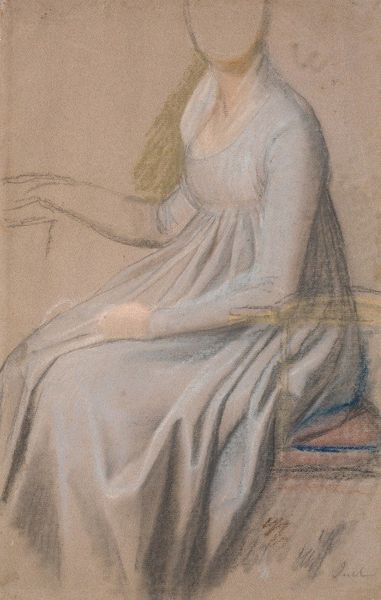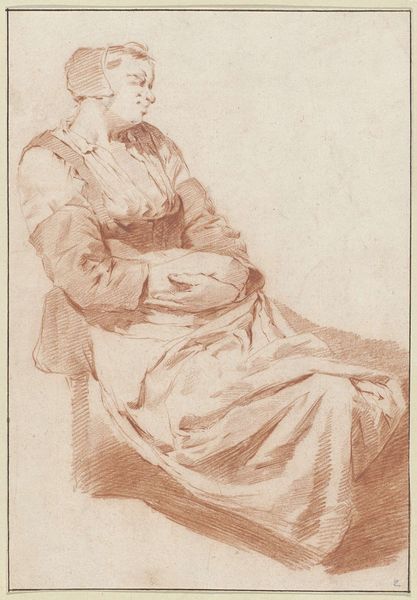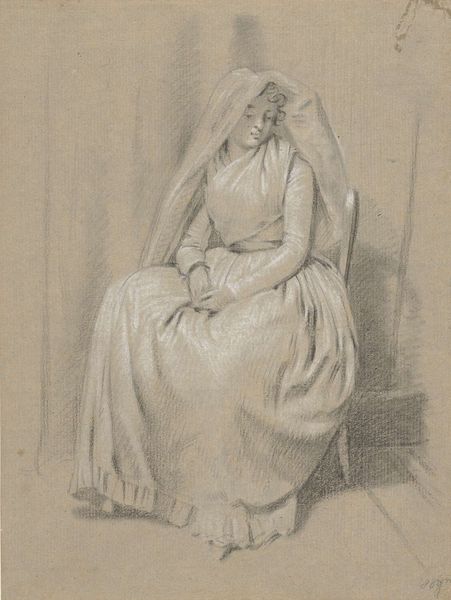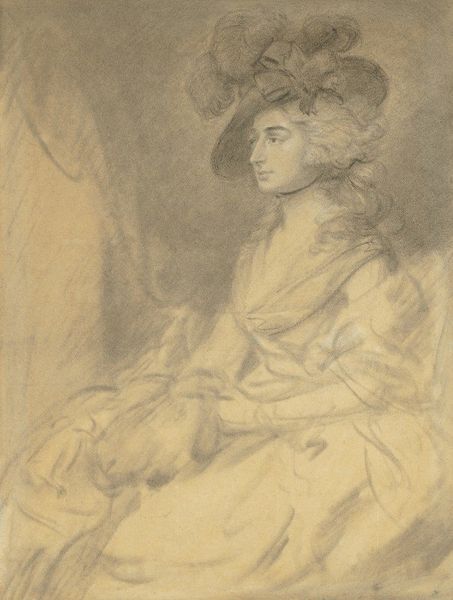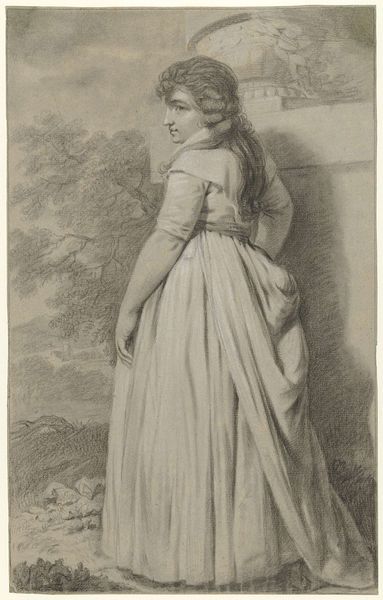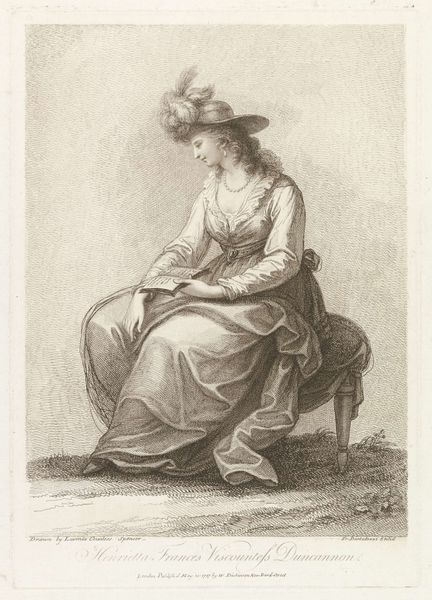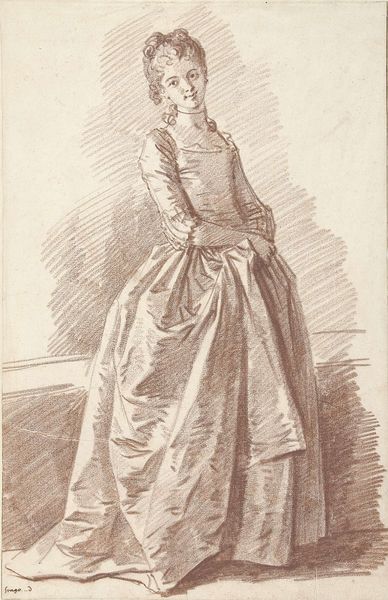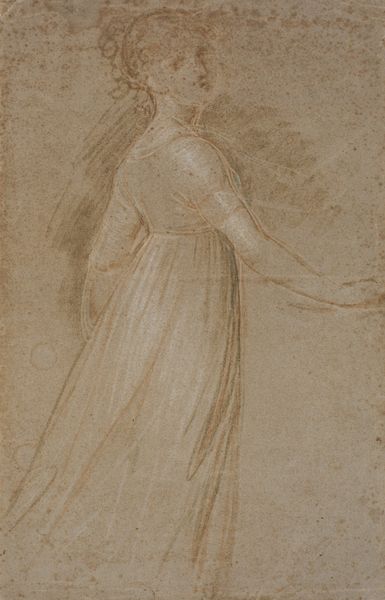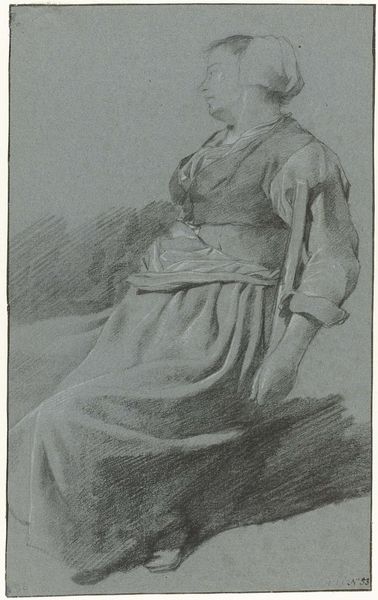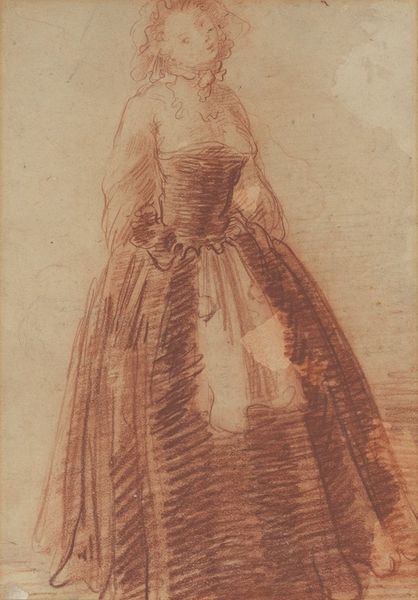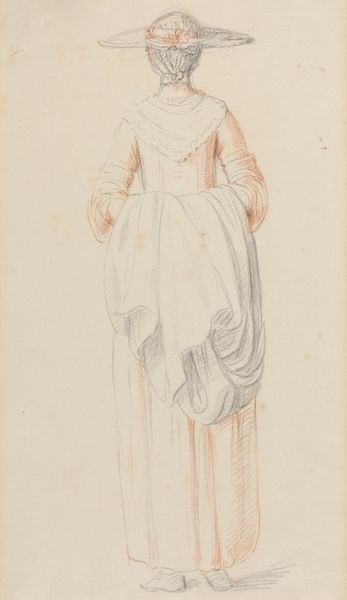
Rosine Juel, født Dørschel; studie til dobbeltportræt af Juel og hans kone ved staffeliet 1791
0:00
0:00
drawing, pencil
#
portrait
#
drawing
#
charcoal drawing
#
figuration
#
pencil drawing
#
romanticism
#
pencil
#
academic-art
Copyright: Public Domain: Artvee
Editor: This is a pencil and charcoal drawing from 1791, by Jens Juel, titled "Rosine Juel, født Dørschel; studie til dobbeltportræt af Juel og hans kone ved staffeliet," a study for a double portrait. I’m really struck by the sitter's calm expression and the intimacy that emerges through the soft rendering. What catches your eye, viewing it from your perspective? Curator: Well, first, let’s think about context. Juel was Denmark's leading portrait painter. Consider the social dynamics of portraiture in the late 18th century. Who commissioned portraits, and what messages were they trying to convey? Editor: Usually, it was wealthy patrons seeking to cement their social standing, right? This sketch is of the artist's wife - would that suggest a different kind of intent or public role, perhaps more intimate or preparatory? Curator: Precisely! The work itself suggests the public image, the *finished* portrait for public view. But look at the study here, notice its existence. In light of the conventions surrounding 18th-century portraiture, where does a study like this fit? Does it offer us a glimpse behind the scenes? Editor: It does feel more personal. Almost as if we're seeing her how her husband saw her during quieter moments, rather than the idealized presentation meant for wider audiences. I wonder if he was trying to capture something more genuine before composing the “official” painting? Curator: Exactly! So how does understanding this context – the public versus the private, the official versus the intimate - change our appreciation of the drawing itself, its texture and line quality? Think of what museums and collectors tend to display; is it ever this sort of work? Editor: I see what you mean. Knowing the social and artistic conventions, seeing this sketch feels almost like peeking behind the curtain of the art world. It’s less about outward show, and more about… internal process. This dialogue between a “public” double-portrait and its “private” preparatory study complicates any simple reading. Curator: Precisely, a wonderful observation! Examining the socio-political layers enriches this quiet, intimate work on paper. I’ll never look at studies the same way again.
Comments
No comments
Be the first to comment and join the conversation on the ultimate creative platform.
